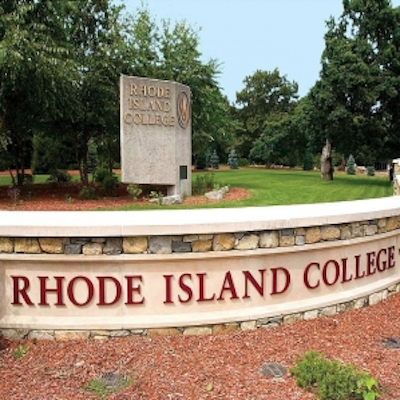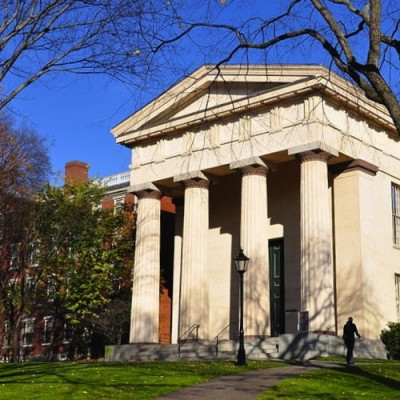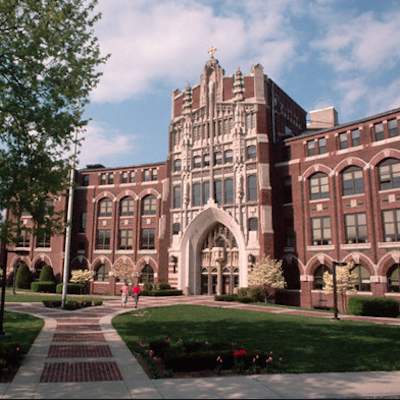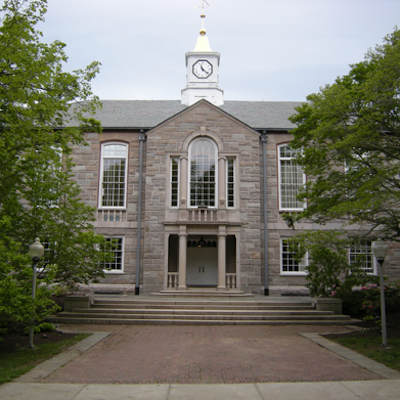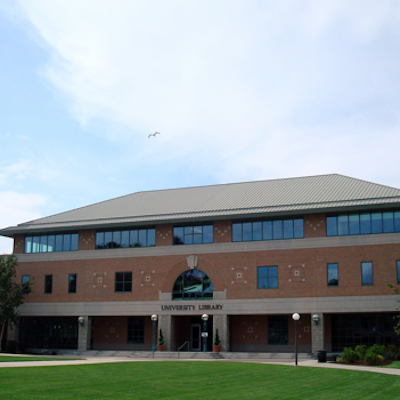College Admissions: How To Keep From Choosing The Wrong College
Monday, March 23, 2015
It's nothing to laugh at--decision season is coming up and you don't want to choose the wrong college.
Beware of Student Gossip
The old adage “bad news travels faster than good news” is especially true with regard to colleges. Be wary of online sites that host bitter student reviews. Few happy students have the time or the inclination to go on and post a positive review. Also, take the gossip in your high school or neighborhood with a grain of salt when someone leaves a college. Look instead at the overall statistics; do not make a judgment based on one individual. For a great guide centered around hundreds of student surveys and interviews, I recommend The Insider's Guide to the Colleges by The Yale Daily News. It only reviews about 300 colleges and universities in the country, but it does a terrific job of giving insight into campus life, course rigor, professor access and the surrounding community.
Spend the Night
I highly recommend that students do an overnight visit at their top choice colleges before making a final decision. The admissions office at most smaller colleges will help facilitate this, but at larger institutions, you may need to network with friends and family to find an existing student to host you for the night. Go to classes on a Friday and then check out the “on campus” and “off campus” social scene. This real life experience will give you a valuable feel for the flavor of the student body and the quality of the classes and professors.
GET THE LATEST BREAKING NEWS HERE -- SIGN UP FOR GOLOCAL FREE DAILY EBLASTMajors and Courses
Some seniors will have a good idea of what they want to major in. If so, take a deeper dive into the courses offered, professor credentials, and internships or research opportunities. Remember that course catalogs are VERY deceiving. They usually contain every course taught in the last 5 years (or that may be taught in the next 5 years). It does not mean that those courses are taught every year. For a more accurate understanding of the classes that you will have to choose from in your major, call the department and ask for a course list for this year and next year. If you are a student who is undecided on a major, carefully consider the breadth of offerings at your potential colleges and make sure they line up with your interests.
Review the Data
There are some important statistics that parents and students should review before choosing a college. These are readily available on Web sites like www.collegeboard.com or www.collegedata.com. The first one that I look at is “students returning for sophomore year” - this is a key indicator of how happy students are at a college and the support they receive. If a college has below a 70% return rate, I get concerned. The next data point I suggest you review is the “4 year graduation rate”. While nationally this is quite low (many students take 5-6 years to graduate), you should know what the likelihood is that your costs will extend beyond 4 years. Another item that can be important to students who wish to pursue an advanced degree is “percent of students going on to graduate school”. The one published statistic that I find suspicious is “percent of students finding full-time employment within 12 months of graduation." Given the poor economy, I think the high numbers reported by many schools are hard to swallow. Lastly, families should investigate the economic health of a college, including the endowment fund and state of the physical campus. In 2010, approximately 150 colleges in the U.S. failed the US Department of Education’s test of financial stability.
Cristiana Quinn, M.Ed. is the founder of College Admission Advisors, LLC which provides strategic, college counseling and athletic recruiting services for students. www.collegeadvisorsonline.com
Related Slideshow: RI 4 Year Colleges & Universities with the Highest Student Debt
Seven in 10 college seniors (71%) who graduated last year had student loan debt, with an average of $29,400 per borrower, according to a new report released by the Institute for College Access and Success. According to the Institute’s Project on Student Debt, Rhode Island has the fifth highest student debt in the country, but what about the state's individual institutions? Check out the slides below to see the average debt graduates accrued at Rhode Island colleges and universities.
Note: All data is based on four-year or above institutions for students graduating in the 2011-2012 academic year. Johnson and Wales University and the Rhode Island School of Design are not included in the data below, because they did not report the average debt of their graduates.
Related Articles
- College Admissions: What Your PSAT Scores Really Mean
- College Admissions: How To Save $50K On Grad School Costs
- College Admissions: How To Cut Up To $120K Out Of College Costs
- College Admissions: High School Classes Colleges Look For
- College Admissions: Handling Early Admission Rejection
- College Admissions: Get Noticed By College Coaches This Summer
- College Admissions: Freshmen Blues - What’s a Parent to Do?
- College Admissions: Early Admission Apps Soared for Class of 2018
- College Admissions: Demystifying Early Admissions 2013
- College Admissions: Common App’s Meltdown Threatens Early Decision
- College Admissions: Big Changes For The Common App
- College Admissions: Insider Secrets for Pre-Med Applicants
- College Admissions: Ivy League Remains Elusive for Class of 2018
- College Admissions: Most Outrageous Hidden Stats For Class of ‘17
- College Admissions: What NOT To Do When Bringing Your Child to College
- College Admissions: What College Would Batman Have Gone To?
- College Admissions: Top 10 College Admissions Websites
- College Admissions: The Highest Paying Jobs By College Major 2013
- College Admissions: The Hardest Colleges To Get Into In 2013
- College Admissions: The Common App 2013-14 Sneak Peek
- College Admissions: The 5 Most Unusual Colleges In The US
- College Admissions: The 5 Biggest Campus Visit Mistakes
- College Admissions: SAT Announces Biggest Changes EVER
- College Admissions: No Acceptances? Don’t Panic
- College Admissions: Best Ski + Snowboard Colleges in the West
- College Admissions: Best Ski + Snowboard Colleges in the East
- College Admissions: 5 Reasons to Attend College in Canada
- College Admissions: 5 Reasons To Take The ACT Exam
- College Admissions: 5 Reasons Not To Attend Your Stretch College
- College Admissions: 5 Majors You Need to Choose Before You Apply
- College Admissions: 4 Ways To Avoid Rejection Of Your Application
- College Admissions: 4 Tips For Overcoming ‘College Phobia’
- College Admissions: 4 Things To Do While Waiting For Early Admissions
- College Admissions: 4 New England College Visit Road Trips
- College Admissions: 4 Elite Honors Programs in the East
- College Admissions: 10 Western Colleges Worth the Trip This Summer
- College Admissions: 5 Things Rising Seniors Need To Do This Summer
- College Admissions: 5 Things You Must Know About the SAT and ACT
- College Admissions: 6 Books Every College-Bound Student Must Read
- College Admissions: Avoiding Senioritis and Spring Meltdown
- College Admissions: Athletic Recruitment: 3 Mistakes to Avoid
- College Admissions: America’s High School Cheating Epidemic
- College Admissions: 9 Scholarships Anyone Can Apply For
- College Admissions: 7 Things Your College Counselor Won’t Tell You
- College Admissions: 6 Ways To Ace The College Interview
- College Admissions: 6 Things To Do Before School Starts
- College Admissions: 6 Steps To A Killer College Application
- College Admissions: 6 Reasons Schools Should Offer the Pre-ACT
- College Admissions: 6 Costly Financial Aid Mistakes to Avoid
- College Admissions: 10 Extra-Curriculars Colleges Want To See
- College Admissions: Early Apps Up for Class of 2019
- College Admissions: 3 Ways to Build Application Credentials
- College Admissions: 4 Things To Do While Waiting For Early Admissions
- College Admissions: New England Colleges With the Biggest Rape Issues
- College Admissions: What Your PSAT Scores Really Mean
- College Admissions: The 5 Most Haunted College Campuses
- College Admissions: 4 New England College Roadtrips
- College Admissons: 4 Ways To Avoid Rejection Of Your Application
- College Admissions: 4 Fall Pennsylvania Roadtrips
- College Admissions: Ivy League Less Elusive In Early Action/Decision
- College Admissions: 3 Reasons To Take a Gap Year
- College Admissions: Applications Surge at Many Elite Colleges
- College Admissions: 5 Ways To Survive College Decision Season
- College Admissions: 6 Biggest Lies in College Admissions
- College Admissions: 10 Scholarships ANYONE Can Apply For
- It’s All About Education: Inequities in the College Admissions Process
- College Admissions: SAT Myths Busted
- College Admissions: 4 Ways to Increase Your Financial Aid Package



